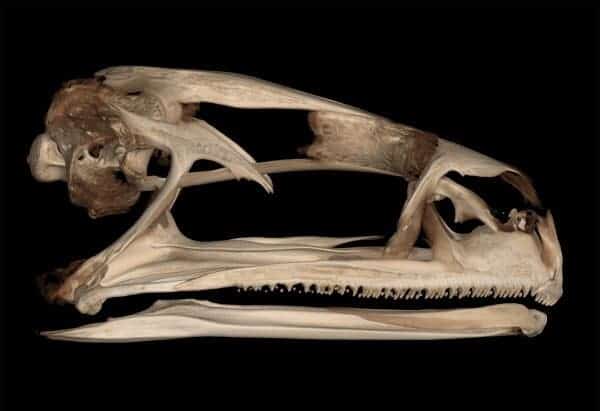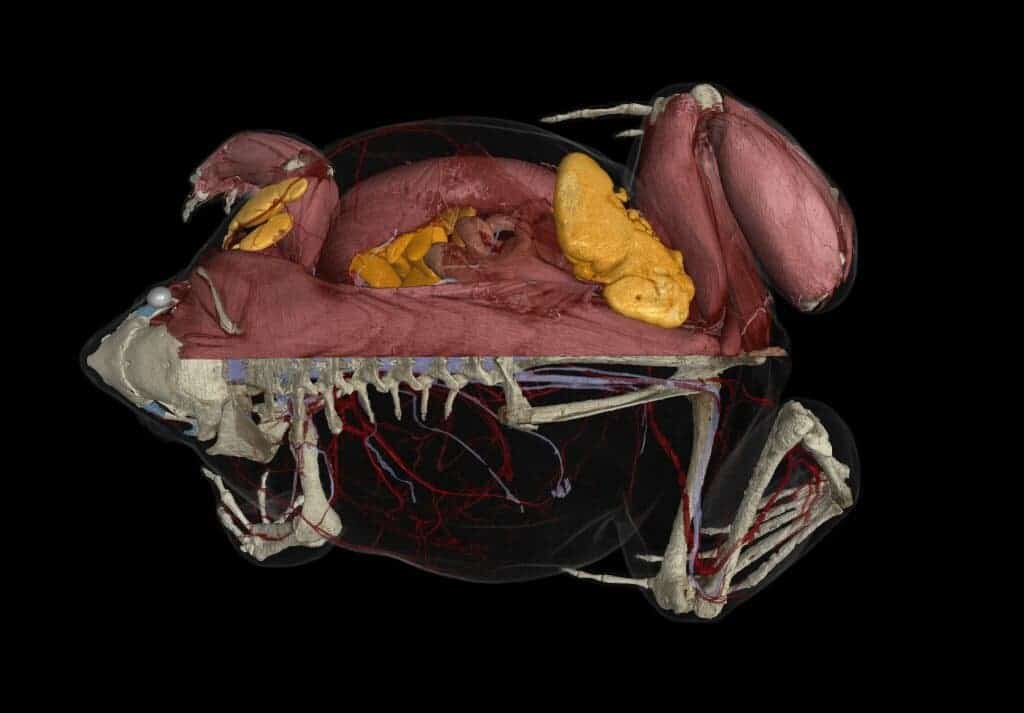Of more than 7,000 species of frogs currently leaping across the world, there’s only one that we know of that has teeth on both upper and lower jaws. But that doesn’t mean it’s always been like this. In fact, it seems like the frog lineage has had quite a contradictory history, having grown and lost their teeth over 20 times during their evolution, far more than any other vertebrate group. The main reason why virtually all frogs have settled on a toothless mouth is due to their specialized diet consisting of small insects, researchers reported in a new study published this week.

Who needs teeth anyway when you got a super slick tongue
Teeth can confer a competitive advantage to the animals that have them, allowing them to access different sources of prey that wouldn’t have been available otherwise. Scientists believe they first appeared more than 400 million years ago in fish, such as the armored fish Romundina stellina, which is an even more ancient creature than sharks. In time, teeth were acquired by sharks, most bony fish, and ultimately the first vertebrates that roamed onto land.
Although teeth may seem like simple tissue, looks can be deceiving. They form through a complex process and can therefore be taxing from an energy standpoint. This is why some species lost their teeth, such as birds who discarded their teeth around 100 million years ago with the advent of the beak, and so did whales and frogs. The latter’s relationship with teeth, however, has always been challenging to investigate the fragile nature of most frog skeletons.
“If you open a frog’s mouth, chances are you will not see teeth even if they have them, because they’re usually less than a millimeter long,” or smaller than the tip of a pencil, said Daniel Paluh, a Ph.D. candidate in the University of Florida’s department of biology and lead-author of the new study.
In the 19th century, famed paleontologist Edward Cope classified all toothless frogs into the same group, which he named Bufoniformia, suggesting that frogs grew and subsequently lost their teeth once. But later analyses involving modern genetic techniques showed that frogs lost their teeth more than once over the course of their evolution in independent cases.
It was only recently that Paluh and colleagues delved deep into this conundrum. Where others had failed, the team of researchers succeeded thanks to Florida Museum’s massive compilation of CT scans for over 20,000 vertebrate specimens. This allowed the researchers to study the jaws of countless frog species in great detail without any concern that they might damage valuable museum samples.

In order to paint a broad picture of dental changes in frogs, the researchers included representatives of all amphibian groups, analyzing patterns of tooth loss through time. To complement the CT scans, they employed a previously published map of evolutionary relationships between amphibians based on genetic data.
The results were striking. They showed that, counter to the debunked Bufoniformia hypothesis, frogs have undergone “rampant tooth loss.” Teeth seem to appear and disappear constantly through time in groups as distantly related as toads and poison dart frogs. It happened at least 20 times, according to the researchers, more times than all other vertebrate groups combined.
The driving force of this evolutionary pressure seems to be diet. Specifically, a diet of tiny insects was strongly correlated with a lack of teeth.
“Having those teeth on the jaw to capture and hold on to prey becomes less important because they’re eating really small invertebrates that they can just bring into their mouth with their highly modified tongue,” said Paluh. “That seems to relax the selective pressures that are maintaining teeth.”
That’s not surprising at all. After all, specialized mammals that feed on ants and termites, such as pangolins and anteaters, also lack teeth. Instead, they rely on their extra-long tongues to gather prey.
But that’s not to say frogs don’t have teeth at all. When frogs do have teeth, they only have them on their upper jaw, which they use to assist in capturing prey. For the most part, however, frogs will use their projectile tongues to catch prey. What’s more, neither frogs nor amphibians really chew their prey. In the rare instances when a frog actually uses its teeth, it’s usually just to grab and hold on to their food.
Although the sheer number of times frogs have grown and lost teeth is staggering, the show isn’t over yet. According to the researchers, many open questions remain — and not just about frogs. The huge library of CT scans, part of a project known as oVert, allows anyone with an Internet connection to access 3D models derived from the scans, which depict distinct features of organisms, including bones, vasculature, internal organs, muscle tissue. In the future, scientists at the Florida Museum plan on leveraging this database even further to make new discoveries.
“We now have lots of new questions in my lab inspired by the surprising things turning up from 3D imaging from the oVert project, and those will lead us both back into museum collections and to the field to see what these animals are doing in the wild,” said David Blackburn, Florida Museum curator of herpetology and Paluh’s thesis adviser.
The findings were reported in the journal eLife.






